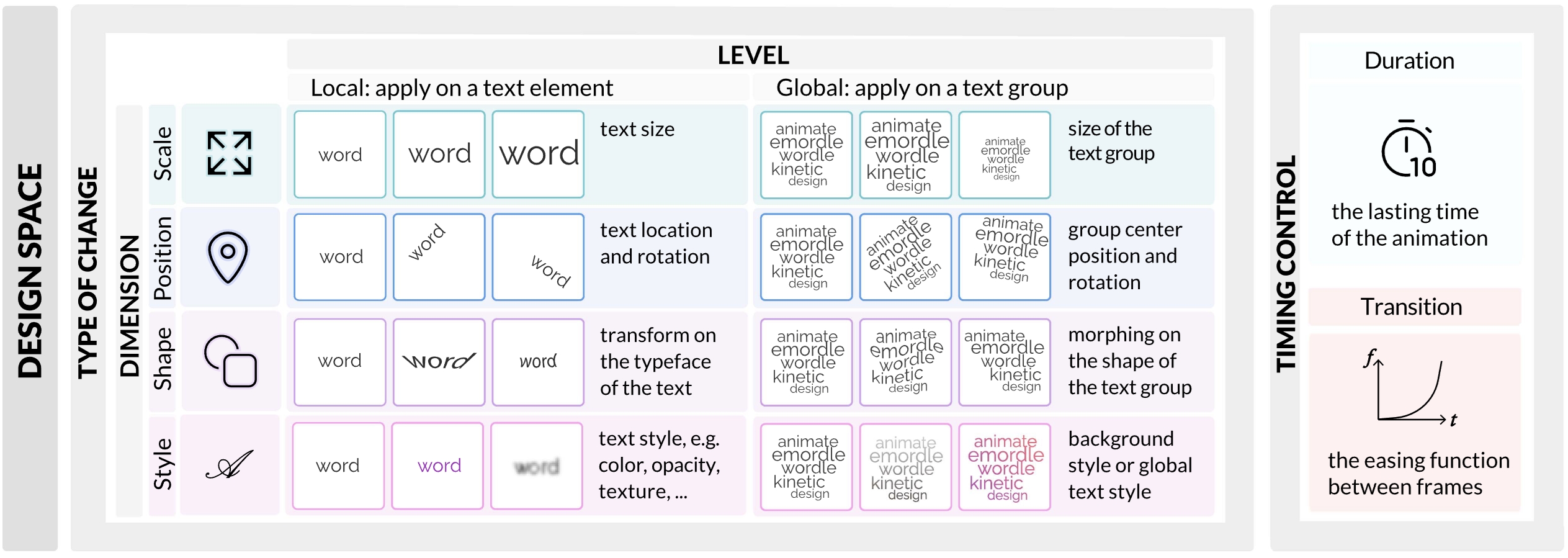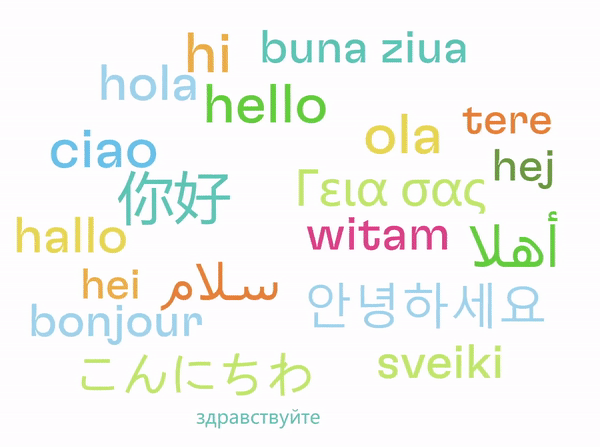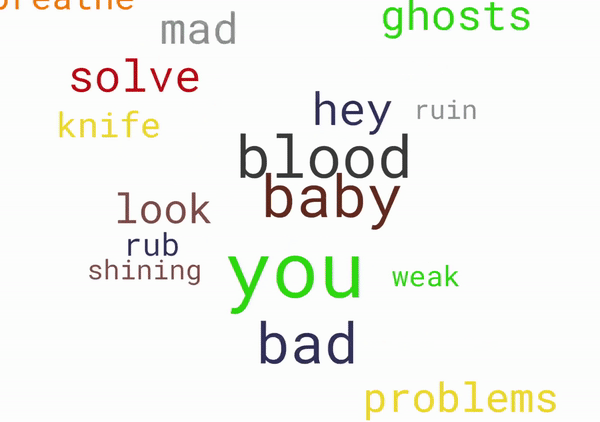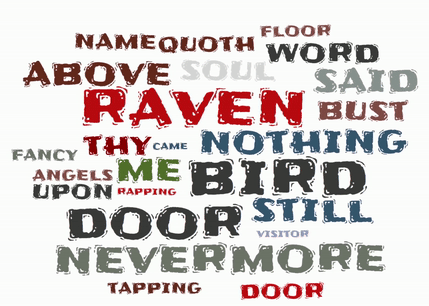Creating Emordle: Animating Word Cloud for Emotion Expression
Abstract
We propose emordle, a conceptual design that animates wordles (compact word clouds) to deliver their emotional context to the audiences. To inform the design, we first reviewed online examples of animated texts and animated wordles, and summarized strategies for injecting emotion into the animations. We introduced a composite approach that extends an existing animation scheme for one word to multiple words in a wordle with two global factors: the randomness of text animation (entropy) and the animation speed (speed). To create an emordle, general users can choose one predefined animated scheme that matches the intended emotion class and fine-tune the emotion intensity with the two parameters. We designed proof-of-concept emordle examples for four basic emotion classes, namely happiness, sadness, anger, and fear. We conducted two controlled crowdsourcing studies to evaluate our approach. The first study confirmed that people generally agreed on the conveyed emotions from well-crafted animations, and the second one demonstrated that our identified factors helped fine-tune the delivered emotion extent. We also invited general users to create emordles on their own based on our proposed framework. Through this user study, we confirmed the effectiveness of the approach. We concluded with implications for future research opportunities of supporting emotion expression in visualizations.
Keywords —— Wordle, Animation, Affective Visualization, Authoring, Casual Visualization
30s Preview & Detailed Introduction
Motivation
In data-driven storytelling, the core message is sometimes hidden behind the “objective” graphical representation of data. Can we make data visualizations more self-explanable, more suggestive of the emotional context, and more affective without sacraficing its accuracy? We see opportunities in animating unused visual channels. Animation has been known to be powerful to elicit emotional response, and we choose word cloud to be our probe as it is a typical victim that suffer from ambiguity and loss of context.
The name “emordle” is a portmanteau of “emotion” and “wordle” (Not the game! We mean the word cloud), highlighting our interest in delivering emotional context in wordles.
Formative Study
With limited real-life instances of animated word clouds available, we review illuminating examples of kinetic typography to understand potential building blocks for data-driven graphics and to identify strategies for delivering emotion in animation. We summarize the strategies into two global factors: the randomness of text animation (entropy) and the animation speed (speed).
 A design space of kinetic typography. Apart from essential motion graphics set-up (time control & and element-wise animation clip), wordles introduce high-level spatial coordination concerning global features.
A design space of kinetic typography. Apart from essential motion graphics set-up (time control & and element-wise animation clip), wordles introduce high-level spatial coordination concerning global features.
Method
We propose an approach to craft an emordle by linking base text animation to basic emotion, and adding variations to control emotional extent. To create an emordle, general users can choose one predefined animated scheme that matches the intended emotion class and fine-tune the emotion intensity with the two parameters: entropy and speed. Internally, the animated scheme is shared by all visual marks, with underlying spatial coordination that have been parameterized.

Four animation schemes matching base emotions: happiness, sadness, anger, and fear.

A prototype authoring tool for emordle.
Evaluation
We conducted two controlled crowdsourcing studies to evaluate our approach. The first study (N=70) confirmed that people generally agreed on the conveyed emotions from well-crafted animations, and the second one (N=132) demonstrated that our identified factors helped fine-tune the delivered emotion extent. We also invited general users to create emordles on their own based on our proposed framework. Through this user study (N=12), we confirmed the effectiveness of the approach.

Example questions in the crowdsourcing experiments.
Related Works
So far, there have been limited technical explorations to empower end-users in animating data-driven graphics with affective expressions. We call for more research on this direction ;-D.
- Kineticharts: Augmenting Affective Expressiveness of Charts in Data Stories with Animation Design. TVCG’2022.
- Communicating with Motion: A Design Space for Animated Visual Narratives in Data Videos. CHI’2021.
Citation
Liwenhan Xie, Xinhuan Shu, Jeon Cheol Su, Yun Wang, Siming Chen, and Huamin Qu. 2024. Creating Emordle: Animating Word Cloud for Emotion Expression. IEEE Transactions on Visualization and Computer Graphics 30(8):5198—5211. DOI: 10.1109/TVCG.2023.3286392
Bibtex
@article {xie2023emordle,
title = {Creating Emordle: Animating Word Cloud for Emotion Expression},
author = {Liwenhan Xie and Xinhuan Shu and Jeon Cheol Su and Yun Wang and Siming Chen and Huamin Qu},
journal = {IEEE Transactions on Visualization and Computer Graphics},
year = {2024},
volume = {30},
number = {8},
pages = {5198--5211},
doi = {10.1109/TVCG.2023.3286392},
url = {https://doi.org/10.1109/TVCG.2023.3286392},
publisher = {IEEE},
}
Today I presented "emordle" about creating affective animation for visualizations on IEEE VIS #ieeevis . If you are interested but missed the morning talk, here is a 🧵.
— Liwenhan Xie (@LiwenhanXie) October 26, 2023
arXiv: https://t.co/ByEsqHamV7
Talk: https://t.co/PWMozQF1eF pic.twitter.com/wDlFOxApjR



